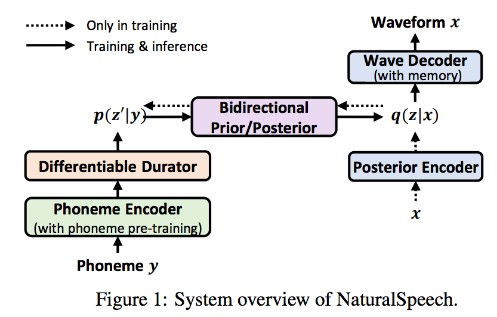GLOM
PyTorch implementation of GLOM, Geoffrey Hinton's new idea that integrates concepts from neural fields, top-down-bottom-up processing, and attention (consensus between columns).
1. Overview
An implementation of Geoffrey Hinton's paper "How to represent part-whole hierarchies in a neural network" for MNIST Dataset.
2. Usage
2 - 1. PyTorch version
import torch
from pyglom import GLOM
model = GLOM(
dim = 512, # dimension
levels = 6, # number of levels
image_size = 224, # image size
patch_size = 14 # patch size
)
img = torch.randn(1, 3, 224, 224)
levels = model(img, iters = 12) # (1, 256, 6, 512) - (batch - patches - levels - dimension)
Pass the return_all = True keyword argument on forward, and you will be returned all the column and level states per iteration, (including the initial state, number of iterations + 1). You can then use this to attach any losses to any level outputs at any time step.
It also gives you access to all the level data across iterations for clustering, from which one can inspect for the theorized islands in the paper.
import torch
from pyglom import GLOM
model = GLOM(
dim = 512, # dimension
levels = 6, # number of levels
image_size = 224, # image size
patch_size = 14 # patch size
)
img = torch.randn(1, 3, 224, 224)
all_levels = model(img, iters = 12, return_all = True) # (13, 1, 256, 6, 512) - (time, batch, patches, levels, dimension)
# get the top level outputs after iteration 6
top_level_output = all_levels[7, :, :, -1] # (1, 256, 512) - (batch, patches, dimension)
Denoising self-supervised learning for encouraging emergence, as described by Hinton
import torch
import torch.nn.functional as F
from torch import nn
from einops.layers.torch import Rearrange
from pyglom import GLOM
model = GLOM(
dim = 512, # dimension
levels = 6, # number of levels
image_size = 224, # image size
patch_size = 14 # patch size
)
img = torch.randn(1, 3, 224, 224)
noised_img = img + torch.randn_like(img)
all_levels = model(noised_img, return_all = True)
patches_to_images = nn.Sequential(
nn.Linear(512, 14 * 14 * 3),
Rearrange('b (h w) (p1 p2 c) -> b c (h p1) (w p2)', p1 = 14, p2 = 14, h = (224 // 14))
)
top_level = all_levels[7, :, :, -1] # get the top level embeddings after iteration 6
recon_img = patches_to_images(top_level)
# do self-supervised learning by denoising
loss = F.mse_loss(img, recon_img)
loss.backward()
You can pass in the state of the column and levels back into the model to continue where you left off (perhaps if you are processing consecutive frames of a slow video, as mentioned in the paper)
import torch
from pyglom import GLOM
model = GLOM(
dim = 512,
levels = 6,
image_size = 224,
patch_size = 14
)
img1 = torch.randn(1, 3, 224, 224)
img2 = torch.randn(1, 3, 224, 224)
img3 = torch.randn(1, 3, 224, 224)
levels1 = model(img1, iters = 12) # image 1 for 12 iterations
levels2 = model(img2, levels = levels1, iters = 10) # image 2 for 10 iteratoins
levels3 = model(img3, levels = levels2, iters = 6) # image 3 for 6 iterations
2 - 2. PyTorch-Lightning version
The pyglom also provides the GLOM model that is implemented with PyTorch-Lightning.
from torchvision.datasets import MNIST
from torch.utils.data import DataLoader, random_split
from torchvision import transforms
import os
from pytorch_lightning.callbacks import ModelCheckpoint
from pyglom.glom import LightningGLOM
dataset = MNIST(os.getcwd(), download=True, transform=transforms.Compose([
transforms.Resize((256, 256)),
transforms.ToTensor()
]))
train, val = random_split(dataset, [55000, 5000])
glom = LightningGLOM(
dim=256, # dimension
levels=6, # number of levels
image_size=256, # image size
patch_size=16, # patch size
img_channels=1
)
gpus = torch.cuda.device_count()
trainer = pl.Trainer(gpus=gpus, max_epochs=5)
trainer.fit(glom, DataLoader(train, batch_size=8, num_workers=2), DataLoader(val, batch_size=8, num_workers=2))
3. ToDo
- contrastive / consistency regularization of top-ish levels
4. Citations
@misc{hinton2021represent,
title = {How to represent part-whole hierarchies in a neural network},
author = {Geoffrey Hinton},
year = {2021},
eprint = {2102.12627},
archivePrefix = {arXiv},
primaryClass = {cs.CV}
}


![Factual Probing Is [MASK]: Learning vs. Learning to Recall](/content/images/2021/08/OptiPrompt.jpg)


